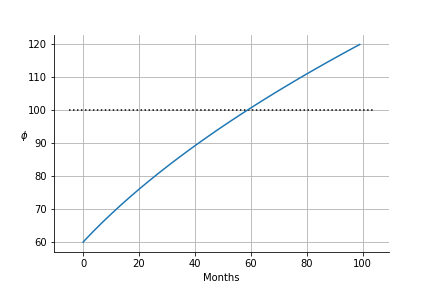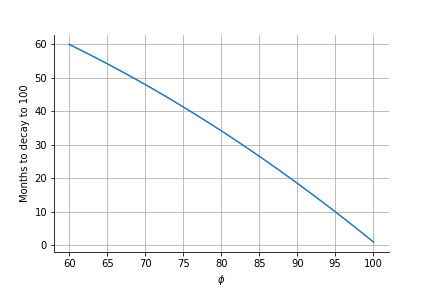Glicko rankings
Glicko is an alternative rating system to Elo, which is what the NAF has been using since Lycos was in short trousers. That’s not to say it’s necessarily better, or more accurate- just different. Glicko is a more complex system than Elo, in that it has 2 numbers per rating. The first, mu, is an estimate of overall ability. The second, phi, is a measure of how confident we are about that estimate.
Coaches start with a mu of 1500, and a phi of 350. We combine the two to get our final ranking. This is done by subtracting 2.5*phi from mu. This is designed to value high ability, but also to penalise when we aren’t confident about that ability. For example, a player who has only ever attended 2 tournaments and won them both 6-0-0. Where should they be rated? This method gives them a high mu, but also a high phi– meaning they do well, but need to play more to lower their phi get to the top. The only way of reducing phi is to play lots of games!
Glicko allows us to address some of the issues in Elo rankings- the first is decay. Glicko rankings are not done per game, but on a monthly basis. If a player doesn’t play in a month- then their phi value is slightly increased, as we are less certain of their ability. If they don’t play for several months, their phi value inflates sufficiently to send them down the rankings. However- they retain their mu, should they wish to return at a later date.
The graph below shows how phi inflates (causing rating to decay) over time (from 60 in this case).
In this implementation we define coaches as inactive, if their phi exceeds 100. This means that they do not receive a rank. In real terms, it will usually take a couple of tournaments with a race before phi drops below 100, and we become confident enough of ability to provide a rank.
Decay is a fairly slow process, and playing a tournament every 18 months or so should keep you active with a particular race, so it’s not overly stringent. Inactive players/races are denoted by a “-” instead of a rank in the first column.
This graph shows how long it would take a player to decay to 100, and become inactive for different values of phi. As you can see it’s quite slow!
Another feature of Glicko is that it rewards beating coaches that have a low phi much more than coaches that are brand new and have a high value (remember phi starts at 350, and a regular tournament player may have a value around 70). This means to get to the top of the rankings, you have to beat regular players on a regular basis.
Something that does cause confusion is how many games it will take before phi decreases to below 100. The honest answer is, that it depends. If you beat a good coach with a low phi, your phi will be adjusted heavily to reflect this. Broadly your phi will decline quickly if you play low phi players, and more slowly by playing high phi players. I (mubo) have made a web calculator to work out your new ratings given a set of results: http://35.231.246.179/glickoweb/ .
Finally, there is some cross talk between race rankings with this implementation, if a player starts a new race- they get assigned a mu depending on their existing race rankings. If a coach has a great record with other races, so we have much more confidence that he is a top Wood Elf coach too, even if this is their first tournament outing!
Global Glicko
Global glicko rankings are calculated using results pooled from all* races. The method is broadly the same, but with a small parameter tweak to make decay a little faster, as players (by definition) play at least as frequently as they do with a single race. Rankings are calculated daily, but change is expressed relative to the last full month. So, on the 30th January, change in position and rating are relative to 1st December. On the 1st Febuary, it’s relative to 1st January.
* we exclude results using the less competitive races Goblins, Haflings and Ogres.

